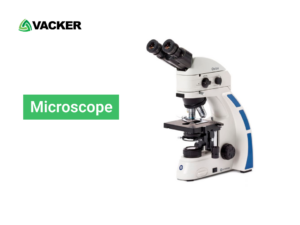
Since its invention in the late 16th century, the microscope has been a pivotal instrument in the progress of scientific discovery. Its evolutionary path—from simple magnifying lenses to powerful electron microscopes—has opened up entire worlds that were once invisible to the naked eye. Early iterations crafted by pioneers such as Antonie van Leeuwenhoek led to the groundbreaking observation of microbial life, fundamentally altering our understanding of biology and disease. Over the centuries, enhancements in optical quality and magnification power have allowed scientists to explore intricate structures, such as the architecture of cells, the complexity of tissues, and the intricacies of minute organisms. The advent of electron microscopes pushed these boundaries even further, enabling the observation of subcellular components and the very atoms that constitute matter, thus playing a critical role in fields as varied as medicine, material science, and nanotechnology. Today, the microscope remains an emblem of scientific inquiry—a tool that continually reshapes our comprehension of the natural world.
The Indispensable Microscope in Scientific Study
The microscope, often regarded as a portal to the microscopic world, has been an indispensable instrument in scientific study. With the ability to magnify the minuscule to a scale comprehensible to the human eye, microscopes have extended our vision beyond the limitations of the human eye, ushering in groundbreaking developments across numerous fields. Researchers and scientists are endowed with the capability to scrutinize organisms as small as a single cell, discerning not just their structure but also their complex internal processes. It is the dance of molecules, too slight for unaided sight, that is revealed through the lenses of the microscope, allowing a deeper understanding of chemical and biological phenomena. This powerful tool has paved the way for endless explorations and discoveries, continually expanding the collective knowledge of humanity and fostering innovation on a foundational level. Across disciplines, from medicine to materials science, the microscope remains a beacon of inquiry, a testament to human curiosity, and a steadfast ally in the quest to unveil the unseen intricacies of our universe.
The Historical Evolution of the Microscope
The historical evolution of the microscope is a captivating narrative of discovery and innovation. Emerging in the 17th century, this remarkable instrument traces its origins to the Netherlands, where pioneering minds embarked on a quest to magnify the unseen world. Significant figures such as Hans Lippershey, Zacharias Jansen, and Antony van Leeuwenhoek played crucial roles in its inception. These early microscopes were rudimentary by today’s standards, but they unlocked the gates to an infinitesimal universe previously shrouded in mystery. From these humble beginnings, the microscope has undergone a remarkable transformation, evolving through the works of luminaries like Robert Hooke and beyond. Each generation has left its mark on its design, refining and enhancing its capabilities, and propelling it into modernity. Today, it stands not only as a fundamental tool in scientific study but also as a symbol of our enduring pursuit of knowledge—a testament to humanity’s unquenchable thirst to understand the fabric of life down to its smallest strands.
The Earliest Microscopes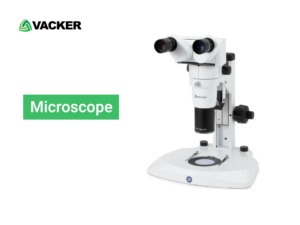
In the annals of scientific history, the invention of the earliest microscopes stands as a monumental breakthrough, one that offered humanity a sneak peek into the hitherto invisible miniature worlds around us. The likes of visionaries such as Robert Hooke and Antonie van Leeuwenhoek are renowned for their pioneering work with these primitive, yet astoundingly powerful, compound microscopes. Peering through their lenses, they unearthed the existence of cells and microorganisms, catalyzing a seismic shift in our understanding of life’s fabric. These luminary figures not only revealed a hidden microcosm teeming with life but also laid the critical foundational stones for the nascent and blossoming field of microbiology. With each microscopic observation, they charted a course that would revolutionize biology and medicine, profoundly changing the way we perceive and engage with the natural world.
Microscopy in the Age of Enlightenment and Beyond
During the Enlightenment period, the world witnessed an unprecedented expansion of knowledge and discovery, a process in which the humble microscope played a pivotal role. This era, with its burgeoning emphasis on empirical evidence and the meticulous application of the scientific method, catalyzed a surge in technological ingenuity. Advances in magnification and resolution heralded a new era for microscopy, turning it into an indispensable instrument that unraveled the once invisible details of the microscopic world. Visionaries of science wielded these enhanced lenses as keys to unlock mysteries ranging from cellular structures to the behaviors of microorganisms, propelling humanity further into an age of awareness and exploration that profoundly shifted our understanding of life and matter. The microscope’s evolution continued post-Enlightenment, stretching far beyond its initial breakthroughs, forming the bedrock of modern scientific endeavors and reinforcing the endless pursuit of discovery.
The Modern Microscope: Variants and Technological Progress
Today, microscopes have diversified, evolving into specialized instruments tailored for a range of applications.
Optical Microscope
The optical microscope stands as a fundamental instrument, pervasive across countless educational environments. This amazing device brings the infinitesimal into view, magnifying specimens by up to 1500 times using the spectrum of visible light. With the advent of shorter wavelength illumination sources, the intricacies of microscopic worlds unfold in unprecedented detail. Such enhancements have not only bolstered our capacity to observe but have also catalyzed a greater understanding of biological processes and materials at a cellular level. The optical microscope, thus, serves as a vital bridge between the observable human scale and the intricate lattice of life that operates beneath it, revealing secrets hitherto cloaked in the minute.
Digital Optical Microscope
The digital optical microscope represents a quantum leap in imaging technology, seamlessly melding the precision of traditional microscopy with the advancements of the digital realm. These sophisticated instruments employ high-resolution digital cameras and integrated display screens to capture and elucidate minute details of specimens with remarkable clarity. This fusion of optics and electronics has proven indispensable for scrutinizing delicate biological samples, which are often susceptible to damage under conventional microscopic examination. Not only has it revolutionized the way scientists and researchers observe and document microscopic entities, but it has also broadened the horizons of various fields—from medical diagnosis to material science—enabling intricate analyses that were once beyond our visual reach.
Electron Microscope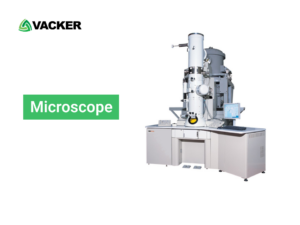
In the realm of microscopic investigation, the electron microscope has been a trailblazer, revolutionizing the field with its ability to harness electrons for imaging. This remarkable tool has expanded the frontiers of scientific study, allowing researchers and scientists to observe the intricate structures of materials down to the atomic scale. Surpassing the limited capabilities of traditional optical microscopes, which rely on light waves, electron microscopes use a beam of accelerated electrons as a source of illumination. The resulting magnification power is so immense that it has unlocked new possibilities for the analysis and understanding of minuscule components, pushing the boundaries of disciplines such as material science, biology, and nanotechnology. Indeed, the impact of the electron microscope’s invention cannot be overstated, as it continues to facilitate groundbreaking discoveries in the microscopic world.
Scanning Electron Microscope (SEM)
The Scanning Electron Microscope (SEM) has revolutionized the way researchers perceive the microworld, offering an unparalleled glimpse into the surfaces of a diverse array of materials. By providing immersive 3D images, SEMs have become indispensable tools in the advancement of scientific study, enabling precise analysis and a deeper understanding of surface characteristics. Through high-resolution imaging, these powerful instruments allow scientists to unravel the complexities of texture and composition, granting insights that are critical for innovations across nanotechnology, materials science, biology, and more. The remarkable detail captured by SEMs opens up new realms of possibilities in both research and development, where the tiniest surface variations can lead to groundbreaking discoveries.
Transmission Electron Microscope (TEM)
The Transmission Electron Microscope (TEM), a marvel of modern science, has vastly expanded the frontiers of our microscopic vision. Capable of magnifications that reach into the millions, these advanced instruments enable scientists to explore the ultrastructure of specimens far too small for the naked eye, like elusive viruses or intricate cellular components. This exploration has tremendously enhanced our understanding at the molecular level. With its innovation dating back to the 1930s, credited to Ernst Ruska, the TEM overcame the barriers imposed by the wavelength of visible light, propelling us into an era where the atomic scale became observable. These microscopes have since become indispensable tools in the field of material science, biology, and medicine, providing insights that inform groundbreaking discoveries and innovations.
Advancing Further: The Future of Microscopy
With advancements in techniques like scanning tunneling microscopy and atomic force microscopy, our ability to interface with the atomic world continues to grow. These cutting-edge methods not only allow us to visualize but also to manipulate individual atoms, presenting unprecedented opportunities for scientific advancement and technological innovation.
As we peer deeper into the microcosm with ever-evolving tools, the role of microscopes remains central to our quest for knowledge. Whether in medical diagnostics or materials science, the insights garnered through these lenses profoundly impact our world, from the treatment of diseases to the development of new materials.
In the panorama of scientific exploration, the microscope is our window into the unseen universe, inviting us to contemplate and comprehend a realm that, though tiny, is as vast and complex as any celestial expanse. It’s a testament to the boundless curiosity and ingenuity of humankind, which continue to illuminate our path towards understanding and manipulating the fabric of reality at its most fundamental level. So let us continue to explore and unravel the secrets of the microscopic world, for our journey has only just begun.
Microscopy in Everyday Life
The impact of microscopes extends far beyond the realm of scientific research and discovery. These vital instruments, which allow us to magnify the minuscule and unveil the details of the microscopic world, find their applications woven into the very fabric of our daily lives. In medicine, they are indispensable for diagnosing diseases, examining cellular structures, and aspiring towards groundbreaking medical therapies. Within the realm of manufacturing, microscopes ensure quality control, scrutinizing products down to their smallest components to guarantee perfection. They play a crucial role in forensic science, helping to solve crimes by revealing traces and evidence invisible to the naked eye. Even in the world of art restoration and conservation, microscopy offers insights into the intricate layers and techniques of historical artifacts. The omnipresence of these incredible tools demonstrates the profound influence they exert on countless aspects of contemporary life, affirming their status as unsung heroes in our perpetual quest for knowledge and precision.
Medical Industry
Microscopes have revolutionized the medical industry by allowing a closer and more detailed look at life’s building blocks. Their application extends from basic research to complex diagnostics, playing a crucial role in disease detection and understanding. With high-powered lenses, microscopes uncover the intricacies of human cells, tissues, and microorganisms, aiding pathologists in diagnosing illnesses such as cancer or infections with unprecedented accuracy. They also facilitate medical advancements by making it possible to observe the effects of treatments on cellular structures, thereby shaping our knowledge on combating various diseases. In the terrain of surgery, especially in procedures requiring precision, microscopes provide a magnified view enabling surgeons to operate with higher precision, minimizing risks and improving patient outcomes. The continuous evolution of microscope technology—such as fluorescence microscopy and electron microscopy—unlocks further potential, pushing the boundaries of medical research towards a future where microscopic insights lead to macroscopic health improvements.
Materials Science
Microscopes play a pivotal role in the field of material science, serving as a window to the unseen world of materials at the micro and nanoscale. Their application is extensive and diverse, impacting the way scientists understand and manipulate materials for innovation. Through the detailed visualization possibilities microscopes offer, researchers can analyze material structures, discover new properties, and develop advanced materials with superior performance. These instruments help in identifying defects or imperfections that could compromise the integrity of materials, ensuring the development of more reliable and robust products. Microscopy techniques such as scanning electron microscopy (SEM), transmission electron microscopy (TEM), and atomic force microscopy (AFM) provide high-resolution images that are instrumental in the study of material surfaces, grain boundaries, and interfaces, crucial for enhancing the functionality of materials. This profound insight gleaned from microscopic analysis drives progress in numerous industries, from the creation of cutting-edge semiconductors to the development of biomaterials for medical implants, showcasing the indispensable nature of microscopes in the modern material science landscape.
Forensics
In the intricate world of forensic science, microscopes emerge as vital tools, extending beyond mere magnification to become pivotal in unraveling the minuscule yet telltale signs of crime. By employing these advanced optical instruments, forensics experts can dissect and scrutinize evidence at a cellular level, unveiling details imperceptible to the naked eye. Whether it’s inspecting the unique characteristics of a fiber, identifying the minutia within a fingerprint, or comparing ballistic evidence, microscopes illuminate the intrinsic patterns that are the quintessence of critical investigative leads. With methodologies such as comparison microscopy, trace evidence analysis flourishes under scrutiny, equipping law enforcement with the clarity needed to construct a narrative from the vestiges left behind. Thus, the rigorous application of microscopes in forensic investigations not only fortifies the evidence but also embodies the confluence of science and justice.
Environmental Science
The application of microscopes in environmental science unlocks a world teeming with minute life forms and biochemical processes, paramount to understanding the complexity of ecosystems. By magnifying the intricacies of environmental samples, such as water or soil, scientists can scrutinize the existence and behaviors of microorganisms, offering clues about biodiversity, pollution levels, and ecological balance. The observation of microbes, some of which might be responsible for degradation of pollutants, equips researchers with insights into natural waste management and decomposition cycles. Further, in the sphere of toxicology, microscopes are instrumental in analyzing the impact of hazardous substances on microscopic organisms and detecting the presence of microplastics in aquatic habitats. Microscopic examination plays a crucial role in analyzing plant diseases and understanding the symbiotic relationships in the rhizosphere, illuminating the dynamics between plant roots, soil, and the microfauna. Thus, microscopes serve as an indispensable tool, extending our vision to the minuscule yet significant architects of our environment, and fostering advancements in environmental preservation and restoration.
Conclusion
From its humble beginnings in the 17th century to its current state as a vital tool in various industries, the microscope has played a crucial role in human progress. As technology continues to advance, so too will our ability to observe and manipulate the microscopic world, unlocking new frontiers of knowledge and discovery. So let VackerGlobal continue to embrace the wonders of microscopy, for it has and will continue to shape our understanding of life and the universe around us. So pick up a microscope, peer through its lens, and marvel at the hidden beauty that lies just beyond our sight. So let us continue the journey and see where it takes us next.
For such content or any kind of information, kindly reach out to us.
The microscope is generally to study small objects such as microscopic organisms, molecules, cells, tissues etc. microscope is the most important device in the field of microscopy. It is through the use of a microscope that we humans can see and study different organisms which otherwise is invisible to the naked human eye.
Microscope has a long history as it is believed to be established in the 17th century. Since there is no proper document about the inventor of the device we still can’t confirm who the inventor of the microscope is. Some groups claim that the first microscope was seen in the city of Netherland during the 20s decade of the seventeenth century. The name of the inventor is said to be Cornelis Drebbel. While there are other groups of people who believe the instrument was developed by Hans Lippershey. Also, there are other different types of claims regarding the invention of the device. Nevertheless, the invention of the device is a major invention in science which helped science move forward rapidly. Many breakthrough discoveries were done with the help of microscope.
The name of the inventor is said to be Cornelis Drebbel. While there are other groups of people who believe the instrument was developed by Hans Lippershey. Also, there are other different types of claims regarding the invention of the device. Nevertheless, the invention of the device is a major invention in science which helped science move forward rapidly. Many breakthrough discoveries were done with the help of microscope.
Today the microscope is more sophisticated and advanced as compared to what it was back then. There are various major types of microscope found in the market which are as described below:
Optical microscope
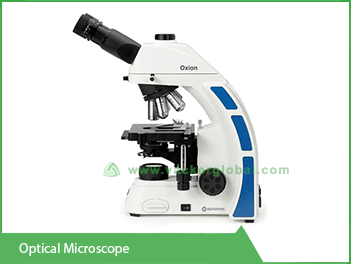
The most common type of microscope is the optical microscope. It is the most primitive type of microscope. These microscopes have a general capacity of magnifying objects up to around 1500 times. The magnifying power of the device can be increased through the use of lights with a shorter wavelength. The optical microscope has been upgraded to digital optical microscope that is more suited to study sensitive biological samples.
Electron microscope
Electron microscope is more advanced microscope than the optical microscope. These types of microscope have higher magnifying capacity than the typical optical microscope. Unlike optical microscope that uses the light rays to generate a magnified image,
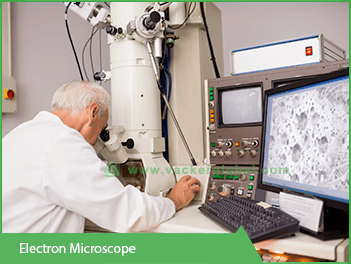 the electron microscope uses electrons for the generation of the image. The first kind of electron microscope was developed in the 1930s and quickly got popular during the period of world war two. The credit for the development of the electron microscope goes to Ernst Ruska. The major types of electron microscopes are:
the electron microscope uses electrons for the generation of the image. The first kind of electron microscope was developed in the 1930s and quickly got popular during the period of world war two. The credit for the development of the electron microscope goes to Ernst Ruska. The major types of electron microscopes are:- Scanning electron microscope.
- Transmission electron microscope
- Hybrid instrument

